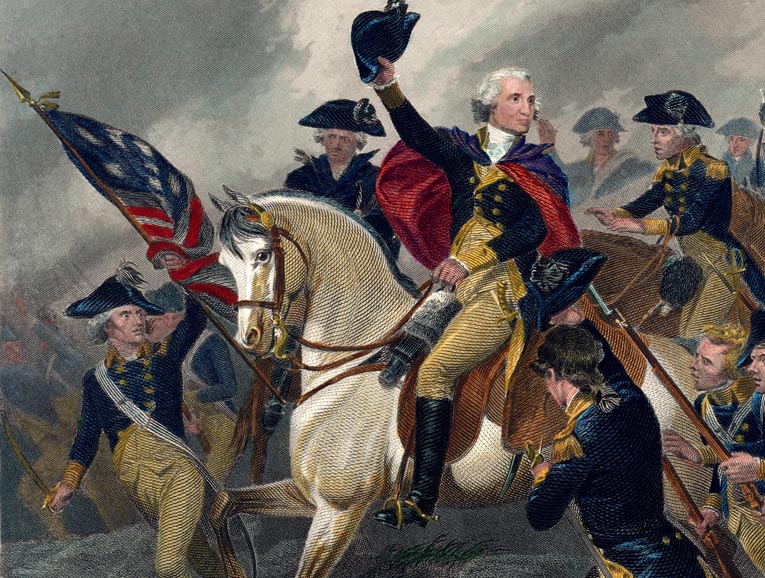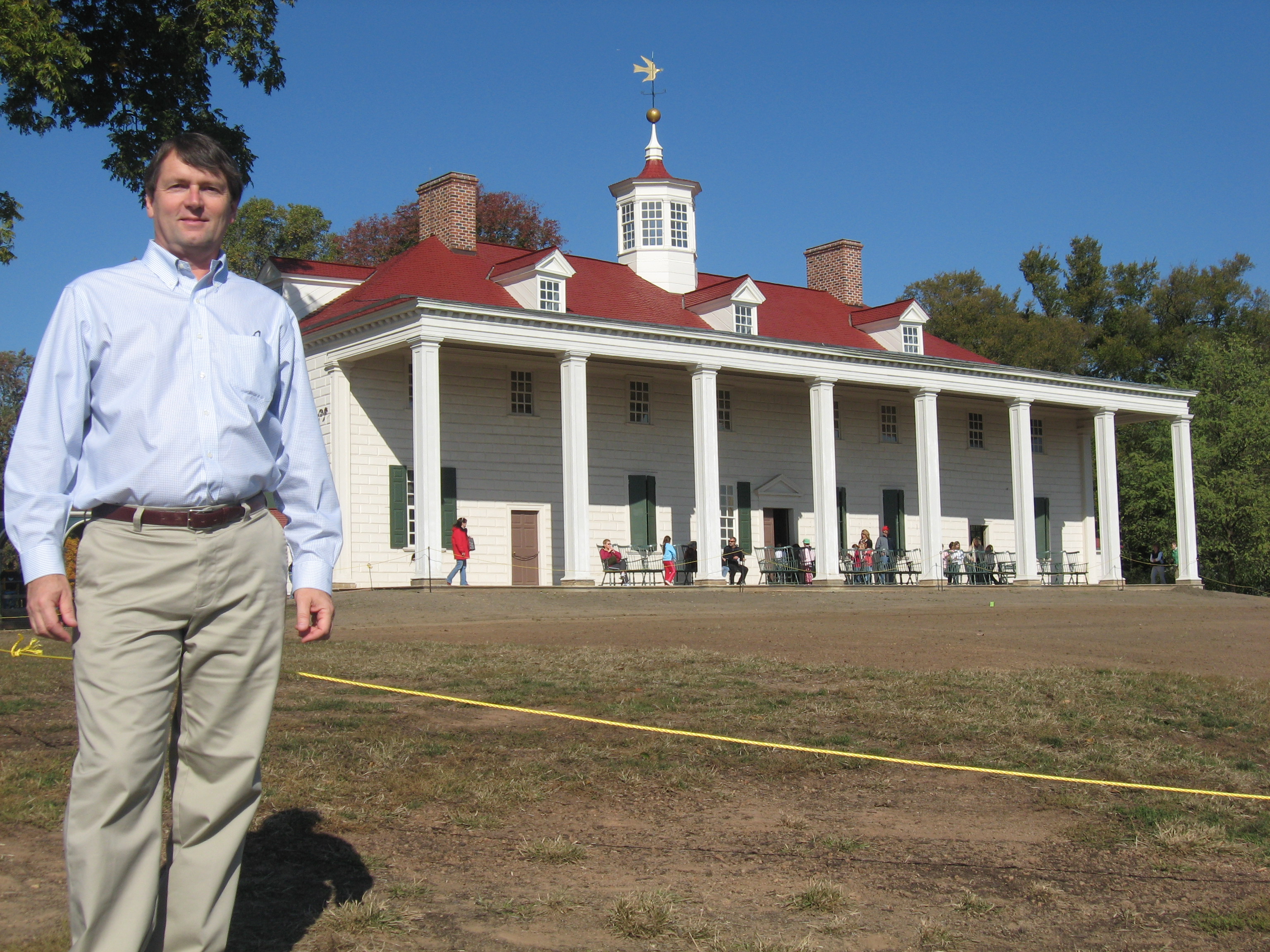
“And then we’ll teach them how to say goodbye,” is how George Washington depicted the writing of his Farewell Address in the rap musical Hamilton. Of course, he already knew how to say goodbye. He’d mastered that act in 1783 when he’d retired as commander in chief following the American Revolution.
Extolled by later historians as a signal event that set the country’s political course, Washington’s first retirement was similarly praised at the time. Citing examples from Julius Caesar to Oliver Cromwell, British propagandists during the war had scoffed at Americans for rebelling against one King George only to gain another in George Washington. Successful rebel leaders inevitably become tyrants, they charged. Indeed, in England, when expatriate American painter Benjamin West predicted that Washington would retire upon the cessation of hostilities, a skeptical King George III replied, “If he does that, he will be the greatest man in the world.”
In America, Washington at once became a second Cincinnatus, the legendary ancient leader twice called from his farm and given supreme power to rescue republican Rome from its enemies only to return home once the dangers had passed. After three-month’s reflection on what he had transpired, Thomas Jefferson commented, “The moderation and virtue of a single character probably prevented this revolution from being closed, as most others have been by a subversion of that liberty it was intended to establish.” Even more than Washington’s service during the Revolutionary War, which was performed without salary or leave for over eight years, voluntarily surrendering the trappings of power for private life on a Virginia plantation made Washington a venerated American hero and world-renowned personification of republican virtue. He had prefaced that act with a Circular Letter to the States that called on residents of the thirteen states, whom he call “citizens of America,” to forge a sovereign federal union that could protect liberty, promote prosperity, and preserve independence. All three were at risk under the weak confederation then looping the states into a loose alliance.
Even more than his service during the Revolutionary War, voluntarily surrendering the trappings of power for private life on a Virginia plantation made Washington a venerated American hero.
Cincinnatus had resigned twice, however, and retiring from the presidency after two terms gave Washington a second chance to establish a legacy of republican virtue. Up to this point, his Circular Letter stood as his most significant public document. In it, he had stressed that his call for a more perfect union could be trusted because he was retiring and had nothing to gain from consolidating power at the national level. He depicted it as disinterested advice from a retiring statesman. And it worked, though Washington and his fellow federalists had to invest more time and effort before the resulting union could be achieved with the ratification of a new Constitution and their sweep of the first federal elections.
The results transformed America. Working like a team under Washington, the new executive, legislative, and judicial branches began the process of forging a continental republic from an assortment of states. The principal policies for doing so came from Treasury Secretary Alexander Hamilton, who emerged as Washington’s most influential advisor, much to the dismay of the more states’ rights-minded Jefferson and his followers. As Secretary of State, though, Jefferson made his contributions to the emerging order, such as by devising a broad regime of federally protected intellectual property rights. With Secretary of War Henry Knox, he also backed Washington’s efforts to open the Ohio country for settlement, leading to prolonged warfare with the Western Confederacy of native tribes until its capitulation in 1795.

Hamilton’s nationalizing policies were founded on funding the full debt run up by Congress and the states during the Revolutionary War. He viewed this as a means to align the interests of wealthy Americans with the central government, displace the states as independent economic actors, and enhance the country’s credit. To pay for it, Hamilton pushed a tariff on imported goods, which would have the side-effect of sheltering American industry, and an excise tax on some domestic items such as whiskey, which he saw as a means to exert authority over frontier distillers. Jefferson reluctantly endorsed Hamilton’s idea of assuming state debts in return for moving the seat of government to the banks of the Potomac River.
As a capstone for his economic program, Hamilton wanted a quasi-independent central bank for the United States, co-owned by private investors, which would in effect regulate fiscal policy and provide a stable national currency. Here, Jefferson drew the line, claiming the Constitution did not authorize Congress to charter a bank. Washington sided with Hamilton, however, and the bank was chartered in 1791. By this point, two distinct factions had emerged with the leaders of each – Hamilton and Jefferson – in Washington’s cabinet.
Endorsed by both camps and encouraged to run as the only one able to bridge the growing partisan divide, Washington was unanimously re-elected in 1792. Under the facade of unity, however, two political parties were forming. On both sides, the outlines of party organizations emerged in the rise of partisan newspapers, the coordination of voting by Members of Congress, and party endorsements for political candidates. Members aligned with Jefferson even gained a slight edge in the House of Representative following the elections of 1792.
His Farewell Address denounced partisanship, embraced nationalism, and discouraged permanent foreign alliances.
Events pushed partisanship during Washington’s second term. Frustrated by Hamilton’s domination over the administration, Jefferson left the cabinet in 1793. A year later, his partisans denounced the government for suppressing resistance to the whiskey tax in western Pennsylvania with a 13,000-soldier army personally led by Washington. Then convulsions caused by the French Revolution and ensuing war between republican France and aristocratic England engulfed domestic politics. Washington’s decision to proclaim neutrality without consulting Congress outraged Jefferson and his supporters, who viewed the United States as bound to support its Revolutionary War ally. When the British Navy nevertheless seized hundreds of American merchant ships bound for French ports in the West Indies, they demanded a second war with England. Instead, in 1794, Washington sent John Jay to resolve differences between the United States and its former colonial master. Bargaining from a weak position, Jay’s treaty did little more than accept British limits on American trade with France in exchange for seemingly meaningless concessions. For the first time, Washington’s popularity sagged.
In 1796, at age sixty-four, Washington announced that he would not accept a third term. He wanted to retire, again, to Mount Vernon. His Farewell Address, which (like his Circular Letter) was printed in newspapers rather than delivered as a speech, denounced partisanship, embraced nationalism, and discouraged permanent foreign alliances. Speaking to all Americans, Washington wrote, “The unity of Government which constitutes you one people, is also now dear to you. It is justly so; for it is a main pillar in the edifice of your real independence, the support of your tranquility at home, your peace abroad; of your safety; of your prosperity; and of that very Liberty which you so highly prize.” This Address joined his Circular Letter as one of his two most significant public writings, with both crafted as parting advice to the American people from a retiring statesman. “I wanna talk about what I’ve learned,” was how Washington puts it in Hamilton. “One last time.” And one last time, he taught us how to say goodbye, leaving us a lasting legacy of republican virtue.
Edward J. Larson is University Professor of History and holds the Darling Chair in Law at Pepperdine University and is the Pulitzer Prizing winning author of The Return of George Washington: Uniting the States, 1783-1789.




